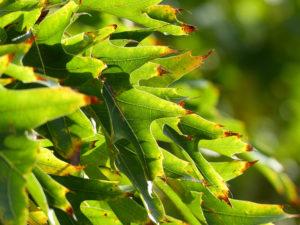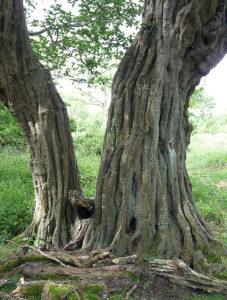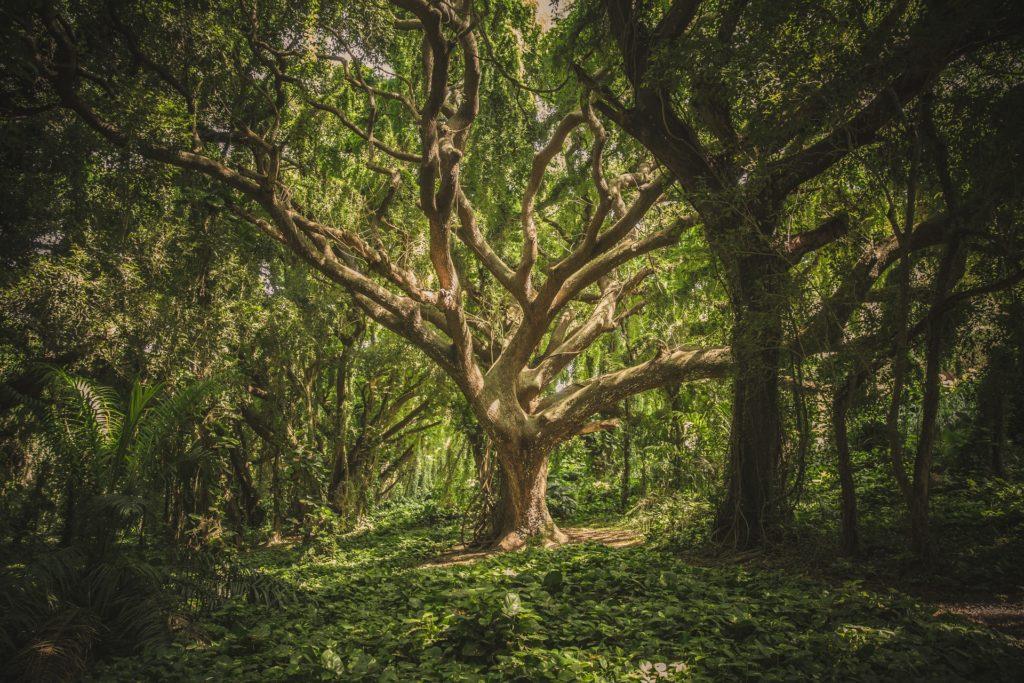Trees are important to both the ecosystem we rely on, and your property. A beautiful tree is a great asset! But if it starts losing its beauty, you should know why!
It’s important to know when your tree is in need of a pruning or if it isn’t going to make it. Diseased, dying, or dead trees are safety hazards that can pose a threat to yourself, family, and your property. Learn the signs of tree trouble so you can take action when it’s needed!
Look at the Leaves and Needles
 Are the leaves on your deciduous trees falling during the height of growing season? Are they discolored and yellow? Are the needles on a conifer yellow, red, or brown, and dropping to the ground? These are all signs that the tree isn’t getting enough nutrients. It could be a deficiency, with the tree lacking in iron, nitrogen, or simply water; it could also be something more drastic, like a disease that could affect the whole tree. Look closely at where the discoloration is coming from to see if it’s just a branch that needs to be excised or something worse that could spread easily.
Are the leaves on your deciduous trees falling during the height of growing season? Are they discolored and yellow? Are the needles on a conifer yellow, red, or brown, and dropping to the ground? These are all signs that the tree isn’t getting enough nutrients. It could be a deficiency, with the tree lacking in iron, nitrogen, or simply water; it could also be something more drastic, like a disease that could affect the whole tree. Look closely at where the discoloration is coming from to see if it’s just a branch that needs to be excised or something worse that could spread easily.
The thickness of the foliage is another sign, one that you can probably detect just by casually glancing out your window. A thin or discolored crown (the mass of branches coming off the main trunk) is a sign that something is affecting the whole of the tree. Branches losing bark is a sign that they’re dead and should be removed by a professional.
Evidence of Bugs Causing Tree Trouble
The best evidence for bugs aren’t the bugs themselves, but the holes they make entering your tree. While only millimetres in diameter, these neatly-drilled entry wounds are signs that your tree is infested. These bugs – the Asian Longhorned Beetle and the Emerald Ash Borer are the main culprits here in Ontario – leave their larvae to tunnel into the tree’s tissue, disrupting the flow of nutrients and water, killing parts or even, if it gets worse, the whole tree.
Another sign of bugs is the frequent visits of woodpeckers. If you’re seeing a lot of attention being paid to your tree by these bug-seeking birds, it’s not because your tree has the best bugs; it’s because your tree has a lot of them, and woodpeckers, while valuable to the food chain, aren’t good at getting rid of pests for you.
If there’s any indication of a bug infestation, call an arborist ASAP. The solution to many infestations is simple insecticides. Even if it’s too late for your tree, dealing with the insects quickly could save many trees in your area.
Examining the Trunk for Tree Trouble
The signs of disease and damage on a tree are fairly obvious if you give the trunk a look over. Some, like the aforementioned insect holes, might need a closer examination to find. If you give your tree an occasional inspection, trunk problems will pop out, if and when they come about.
Note and diagnose large gashes or wounds in the tree. Some insect infestations can cause large wounds or peeling bark- revealing the tubular scars of larvae. Other problems might need a big-picture look: long scars running the length of the trunk are evidence that the tree has been struck by lightning and could be compromised structurally.
If you notice any issues with your tree, contact Brockley today! Our trained arborists can diagnose the problem swiftly and accurately. We rarely declare a tree’s death before its time, so you know we’ll do everything we can to save it!


